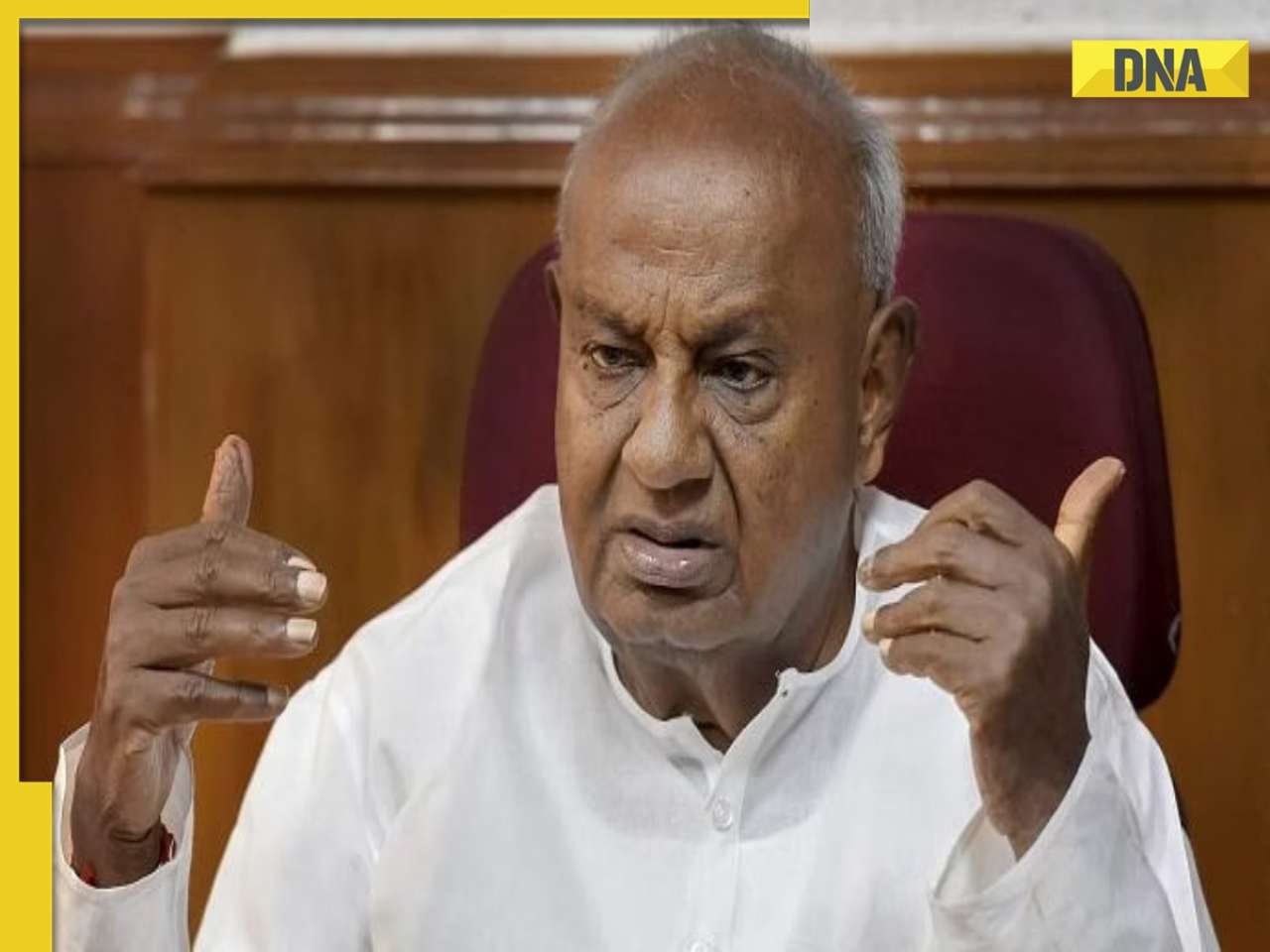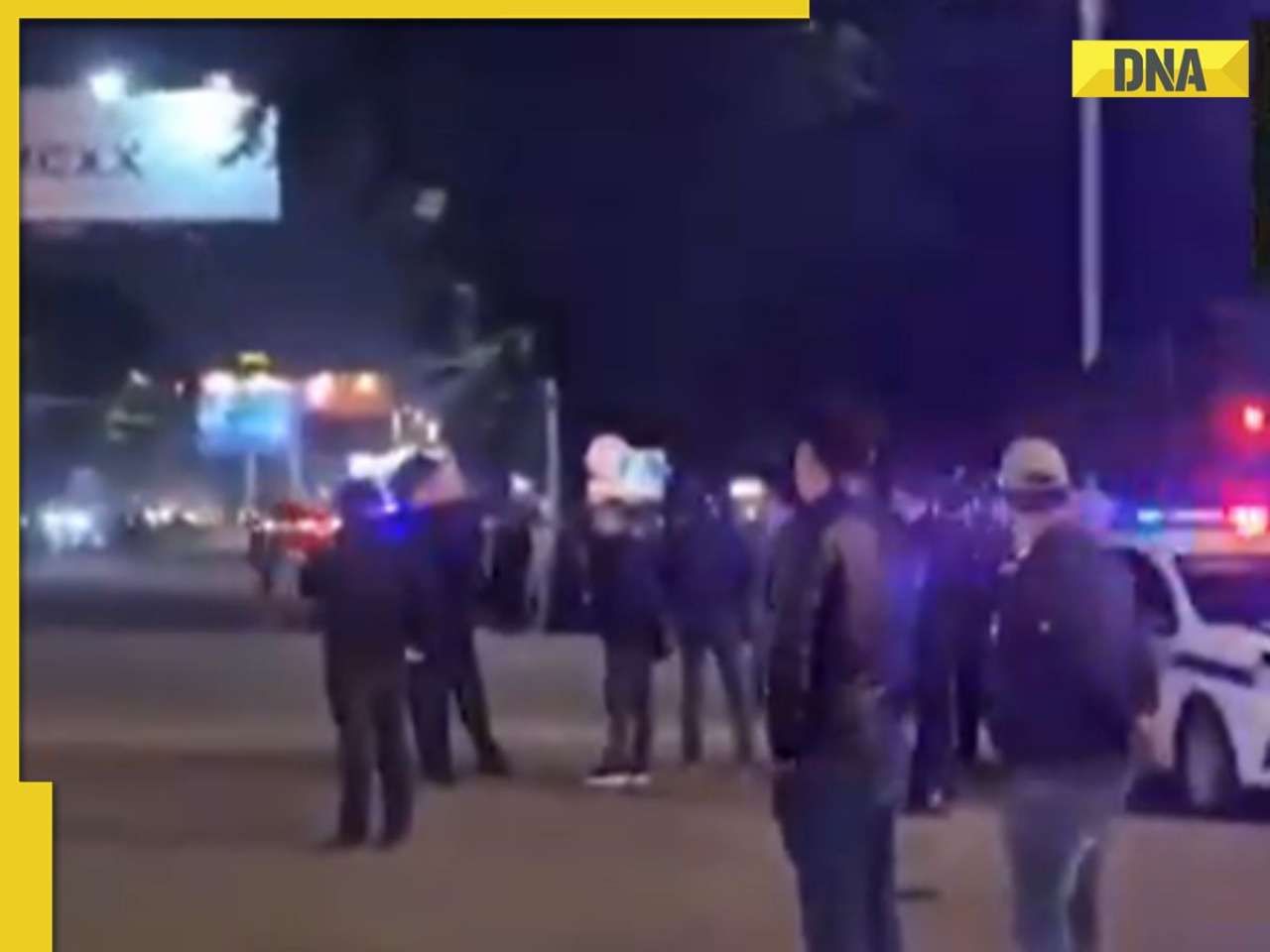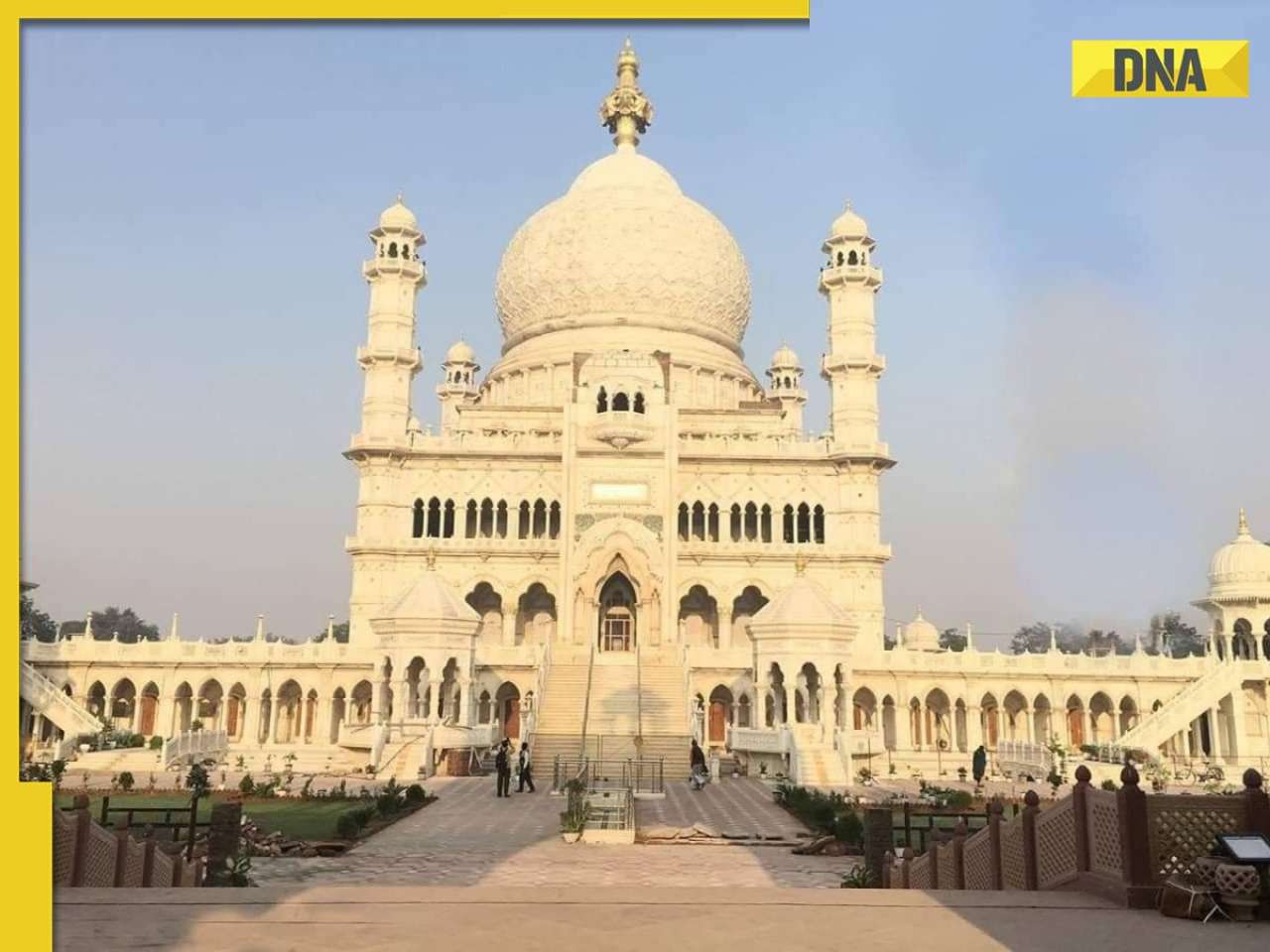Both sides have suffered fatalities, but the bigger cost would be on the economies of both countries.
In the wee hours of Thursday, Russia did what the world was dreading for days – launch a full-scale assault on Ukraine via land, sea and air. And despite high-pitched utterances by Ukraine, the odds are heavily stacked against it.
Within a few hours of the raids, Russia managed to capture key areas and neutralise several Ukrainian military installations. Both sides have suffered fatalities, but the bigger cost would be on the economies of both countries.
Also Read | Ukraine crisis: Economic impact of the Russian attack - A preliminary analysis
Economies to be hit:
The Covid-19 pandemic has badly affected the global economy. But even before the world could tide over the crisis, the Russia-Ukraine conflict seems to be imposing fresh roadblocks for a recovery.
The cost would be significantly greater for Ukraine, a country heavily dependent on imports, and with a GDP of only around 180 billion USD. This is in sharp contrast to the Russian economy, which is worth over 1,600 billion USD, and which dominates the global trade in oil and natural gas.
By late January, fears of an all-out Russian invasion led to the flight of capital from Ukraine. President Volodymyr Zelenskyy had said that $12.5 bn had been withdrawn from accounts in the country. Last week, more than 20 charters and private jets left Kyiv, carrying some of the country’s most prominent executives.
US-based Center for Economics and Business Research estimated this month that the conflict with Russia could cost Ukraine $280 bn in lost GDP between 2014 and 2020 — with those losses expected to climb this year.
But if Russian authorities are to be believed, they are not worried about Western sanctions as Moscow has used the money received from oil and gas exports to build substantial financial defences. Russia is sitting on foreign currency reserves of about 600 billion USD and has extremely low levels of the national debt. On the contrary, Ukraine’s international reserves are only worth 30 billion USD.
Also, Russia provides 40 per cent of Europe’s natural gas, and 20 per cent of its oil. It is the world’s biggest exporter of fertiliser and palladium, a crucial component of the auto industry. In all likelihood, Vladimir Putin would not hesitate to exploit these fronts in case of strict Western sanctions.
German thinktank Kiel Institute believes stopping gas exports would knock 3 per cent off the Russian GDP while ending oil exports would result in a 1.2 per cent hit. But at the same time, it would lead to a global increase in energy prices, inconveniencing several countries.
Russia also has a self-sustaining agricultural industry.
A crashing ruble, however, will put some strain on the Russian economy. At 8.7 per cent, inflation is at a six-year high and a recent survey found that almost two-thirds of Russian families have no savings. Interest rates are at 9.5 per cent and are only expected to rise due to the conflict. Higher borrowing will hurt Russian businesses and consumers.
Lopsided military strength:
Ukraine’s military expenditure is around $6 bn, a title compared to Russia’s defence budget of $70 bn. Russia has over one million active military personnel, while Ukraine only has a fourth of it.
Russia has deployed a battery of heavy weaponry, including tanks, Howitzers, multiple-launch rocket systems and Iskander short-range ballistic missile systems, against Ukraine.
However, global security experts believe holding on to Ukraine might be the bigger challenge for Russia than winning it. The war may soon be reduced to guerrilla resistance, with the US and NATO supplying arms to Ukrainian volunteers.
A full-fledged invasion of Ukraine may well turn out to be expensive for Russia. While a large-scale invasion will require much more than 1.5 lakh troops, claimed to be involved in the war, occupation for months will need hundreds of thousands more, significantly eating into Russia’s budget.
The human price:
The eight-year Russia-Ukraine conflict has had casualties numbering in tens of thousands with the humanitarian costs running into millions. The estimates of the total death toll vary from around 14,000 as per the United Nations to 16,000 according to Human Rights Watch.
More than 3,000 of these have been civilians in eastern Ukraine. More than 7,000 people have been injured and over 1.5 million people displaced due to the conflict.
Further, the war has resulted in vast destruction, costing infrastructures such as residential apartments, hospitals and schools, both in the regions governed by Ukraine and the separatists.
But all these figures might be overwhelmed by the latest developments. US officials estimate a major assault could leave 50,000 civilians dead or wounded, even as Russia insists that it is not targetting civilians.
In 2020, The Vienna Institute for International Economic Studies (wiiw) had estimated that reconstructing war-ravaged Donbas would cost a minimum of $21.7 bn or 16 per cent of Ukraine’s GDP. This cost again may be dwarfed by the scale of ongoing Russian actions in Ukraine.
![submenu-img]() This singer helped BCCI when it had no money to award 1983 World Cup-winning Indian cricket team, raised 20 lakh by...
This singer helped BCCI when it had no money to award 1983 World Cup-winning Indian cricket team, raised 20 lakh by...![submenu-img]() Virat Kohli’s new haircut ahead of RCB vs CSK IPL 2024 showdown sets internet on fire, see here
Virat Kohli’s new haircut ahead of RCB vs CSK IPL 2024 showdown sets internet on fire, see here![submenu-img]() BCCI bans Mumbai Indians skipper Hardik Pandya, slaps INR 30 lakh fine for....
BCCI bans Mumbai Indians skipper Hardik Pandya, slaps INR 30 lakh fine for....![submenu-img]() 'Justice must prevail': Former PM HD Deve Gowda breaks silence in Prajwal Revanna case
'Justice must prevail': Former PM HD Deve Gowda breaks silence in Prajwal Revanna case![submenu-img]() India urges students in Kyrgyzstan to stay indoors amid violent protests in Bishkek
India urges students in Kyrgyzstan to stay indoors amid violent protests in Bishkek![submenu-img]() Meet IIT graduates, three friends who were featured in Forbes 30 Under 30 Asia list, built AI startup, now…
Meet IIT graduates, three friends who were featured in Forbes 30 Under 30 Asia list, built AI startup, now…![submenu-img]() Meet woman who cracked UPSC in fourth attempt to become IAS officer, secured AIR...
Meet woman who cracked UPSC in fourth attempt to become IAS officer, secured AIR...![submenu-img]() Meet IIT JEE 2024 all-India girls topper who scored 100 percentile; her rank is…
Meet IIT JEE 2024 all-India girls topper who scored 100 percentile; her rank is…![submenu-img]() Meet PhD wife of IIT graduate hired at Rs 100 crore salary package, was fired within a year, he is now…
Meet PhD wife of IIT graduate hired at Rs 100 crore salary package, was fired within a year, he is now…![submenu-img]() Meet woman not from IIT, IIM or NIT, cracked UPSC exam in first attempt with AIR...
Meet woman not from IIT, IIM or NIT, cracked UPSC exam in first attempt with AIR...![submenu-img]() DNA Verified: Is CAA an anti-Muslim law? Centre terms news report as 'misleading'
DNA Verified: Is CAA an anti-Muslim law? Centre terms news report as 'misleading'![submenu-img]() DNA Verified: Lok Sabha Elections 2024 to be held on April 19? Know truth behind viral message
DNA Verified: Lok Sabha Elections 2024 to be held on April 19? Know truth behind viral message![submenu-img]() DNA Verified: Modi govt giving students free laptops under 'One Student One Laptop' scheme? Know truth here
DNA Verified: Modi govt giving students free laptops under 'One Student One Laptop' scheme? Know truth here![submenu-img]() DNA Verified: Shah Rukh Khan denies reports of his role in release of India's naval officers from Qatar
DNA Verified: Shah Rukh Khan denies reports of his role in release of India's naval officers from Qatar![submenu-img]() DNA Verified: Is govt providing Rs 1.6 lakh benefit to girls under PM Ladli Laxmi Yojana? Know truth
DNA Verified: Is govt providing Rs 1.6 lakh benefit to girls under PM Ladli Laxmi Yojana? Know truth![submenu-img]() Kiara Advani stuns in Prabal Gurung thigh-high slit gown for her Cannes debut, poses by the French Riviera
Kiara Advani stuns in Prabal Gurung thigh-high slit gown for her Cannes debut, poses by the French Riviera![submenu-img]() Heeramandi star Taha Shah Badussha makes dashing debut at Cannes Film Festival, fans call him ‘international crush’
Heeramandi star Taha Shah Badussha makes dashing debut at Cannes Film Festival, fans call him ‘international crush’![submenu-img]() Streaming This Week: Madgaon Express, Zara Hatke Zara Bachke, Bridgerton season 3, latest OTT releases to binge-watch
Streaming This Week: Madgaon Express, Zara Hatke Zara Bachke, Bridgerton season 3, latest OTT releases to binge-watch![submenu-img]() Sunanda Sharma exudes royalty as she debuts at Cannes Film Festival in anarkali, calls it ‘Punjabi community's victory’
Sunanda Sharma exudes royalty as she debuts at Cannes Film Festival in anarkali, calls it ‘Punjabi community's victory’![submenu-img]() Aishwarya Rai walks Cannes red carpet in bizarre gown made of confetti, fans say 'is this the Met Gala'
Aishwarya Rai walks Cannes red carpet in bizarre gown made of confetti, fans say 'is this the Met Gala'![submenu-img]() Haryana Political Crisis: Will 3 independent MLAs support withdrawal impact the present Nayab Saini led-BJP government?
Haryana Political Crisis: Will 3 independent MLAs support withdrawal impact the present Nayab Saini led-BJP government?![submenu-img]() DNA Explainer: Why Harvey Weinstein's rape conviction was overturned, will beleaguered Hollywood mogul get out of jail?
DNA Explainer: Why Harvey Weinstein's rape conviction was overturned, will beleaguered Hollywood mogul get out of jail?![submenu-img]() What is inheritance tax?
What is inheritance tax?![submenu-img]() DNA Explainer: What is cloud seeding which is blamed for wreaking havoc in Dubai?
DNA Explainer: What is cloud seeding which is blamed for wreaking havoc in Dubai?![submenu-img]() DNA Explainer: What is Israel's Arrow-3 defence system used to intercept Iran's missile attack?
DNA Explainer: What is Israel's Arrow-3 defence system used to intercept Iran's missile attack?![submenu-img]() This singer helped BCCI when it had no money to award 1983 World Cup-winning Indian cricket team, raised 20 lakh by...
This singer helped BCCI when it had no money to award 1983 World Cup-winning Indian cricket team, raised 20 lakh by...![submenu-img]() This film had 3 superstars, was unofficial remake of Hollywood classic, was box office flop, later became hit on...
This film had 3 superstars, was unofficial remake of Hollywood classic, was box office flop, later became hit on...![submenu-img]() Meet Nancy Tyagi, Indian influencer who wore self-stitched gown weighing over 20 kg to Cannes red carpet
Meet Nancy Tyagi, Indian influencer who wore self-stitched gown weighing over 20 kg to Cannes red carpet![submenu-img]() Telugu actor Chandrakanth found dead days after rumoured girlfriend Pavithra Jayaram's death in car accident
Telugu actor Chandrakanth found dead days after rumoured girlfriend Pavithra Jayaram's death in car accident![submenu-img]() Meet superstar who faced casting couch at young age, worked in B-grade films, was once highest-paid actress, now..
Meet superstar who faced casting couch at young age, worked in B-grade films, was once highest-paid actress, now..![submenu-img]() Viral video: Flood-rescued dog comforts stranded pooch with heartfelt hug, internet hearts it
Viral video: Flood-rescued dog comforts stranded pooch with heartfelt hug, internet hearts it![submenu-img]() Dubai ruler captured walking hand-in-hand with grandson in viral video, internet can't help but go aww
Dubai ruler captured walking hand-in-hand with grandson in viral video, internet can't help but go aww![submenu-img]() IPL 2024: Virat Kohli drops massive hint on MS Dhoni’s retirement plan ahead of RCB vs CSK clash
IPL 2024: Virat Kohli drops massive hint on MS Dhoni’s retirement plan ahead of RCB vs CSK clash![submenu-img]() Do you know which God Parsis worship? Find out here
Do you know which God Parsis worship? Find out here![submenu-img]() This white marble structure in Agra, competing with Taj Mahal, took 104 years to complete
This white marble structure in Agra, competing with Taj Mahal, took 104 years to complete








































)

















)
)
)
)
)
)